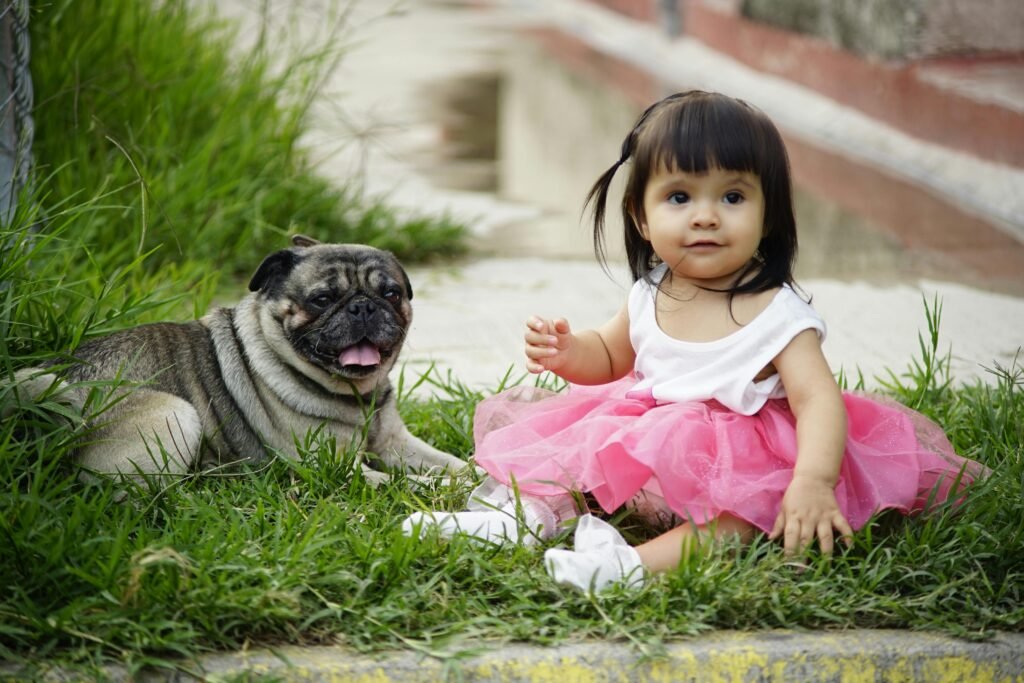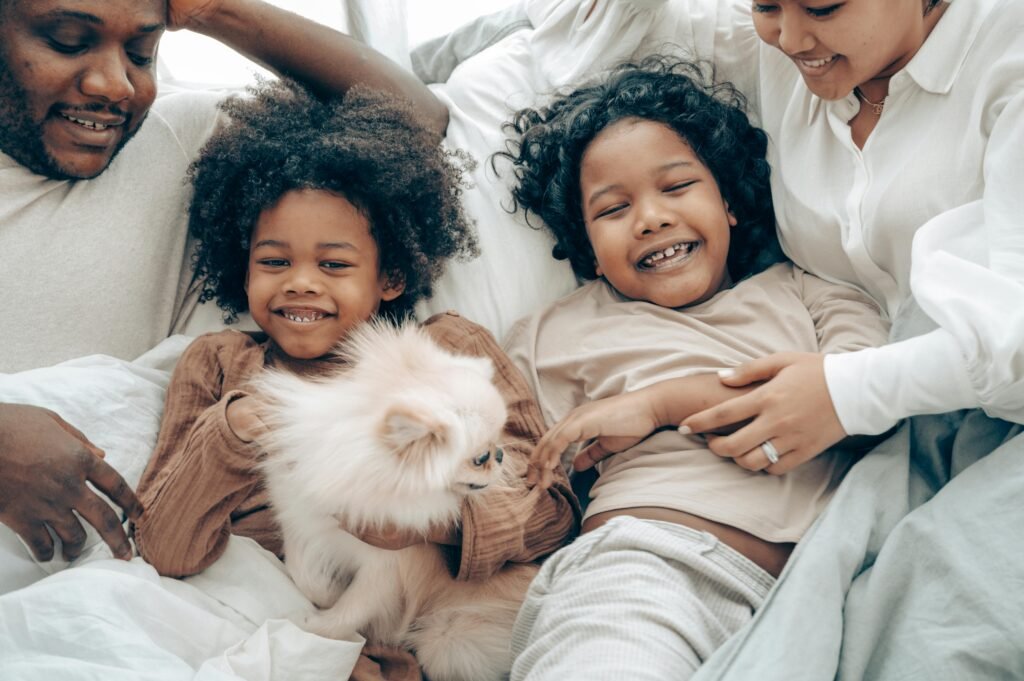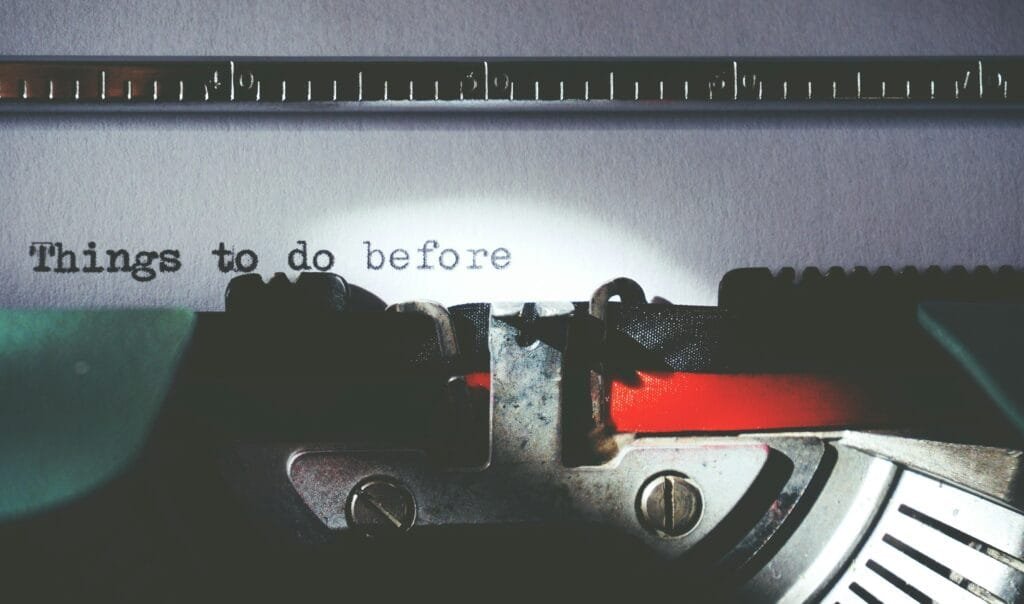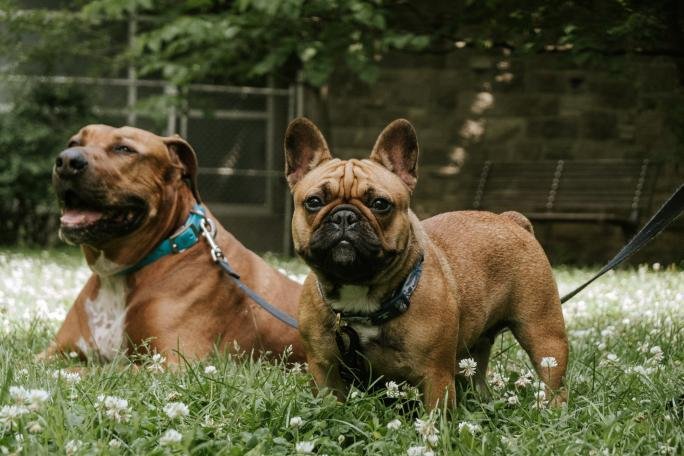Helping dogs and kids thrive together
Dogs and kids can be best friends or total chaos. Between little hands tugging ears and pups who can’t resist chasing running feet, things can get stressful fast. Many families dream of happy harmony between dogs and kids, but that takes more than luck or good intentions.
The good news? With a few tweaks to your routine and a shift in expectations, your home can be safer, calmer, and better for everyone.
Quick takeaways
- Never assume dogs “just know” how to behave around children, they need our support
- Kids need guidance too (coaching, not correcting)
- Small changes in routines and boundaries can prevent bites and build trust
Why dogs and kids need your help to succeed
Here’s the truth: dogs and kids speak different languages, and they often misread each other completely.
A toddler’s sudden hug may feel sweet to us. But to a dog, that tight squeeze from an unpredictable human missile can be deeply stressful. Likewise, a gentle growl or turning away from a child may not seem alarming to a parent. For the dog, it’s a desperate attempt to say “please stop.”
It’s easy to assume that a family dog “should know better,” or that a good-natured pup will simply tolerate anything. But dogs don’t come hardwired with kid-savvy social skills, and even the sweetest ones have limits. In fact, most bites to children come from familiar dogs during everyday interactions, not strays or so-called aggressive dogs.
The good news? You can teach both sides of the leash how to read each other better. With support, structure, and repetition, your dog and child can both feel safer and more understood.
👉 For more on how dogs learn and process the world around them, check out How dogs learn: The science behind behaviour and training.
Set your dog up for calm around kids
If your dog gets overwhelmed when kids are nearby, they’re not being “bad.” They’re giving you feedback.
Management tools can make a big difference. Use baby gates to separate spaces when energy runs high. Offer your dog a dedicated “kid-free zone” where they can decompress, undisturbed. That might be a cozy crate, mat, or even a gated room.
Dogs don’t need to be involved in every moment. Many benefit from breaks away from the noise and unpredictability of kids. This is especially true during playdates, birthday parties, or when your toddler decides they’re a T. rex for the afternoon.
Support calm behaviour with rewards, structure, and consistency. That might mean praising a dog for lying quietly nearby, or offering a chew or puzzle toy during dinner so they’re occupied but present.
Let them walk away when they need to. That’s a success, not a failure. And giving dogs that kind of autonomy builds long-term trust. You can read more about that concept in Dog training and agency: Why choice matters.

Teach kids to be dog friends, not little trainers
“Be gentle” is a nice idea, but it’s not clear enough for a three-year-old.Instead, give kids clear, repeatable tools:
- Slow hands, not grabbing
- Quiet voice, not squealing
- Ask before touching
- Let the dog come to you
If you’re introducing a child to a dog, narrate the interaction like a sportscaster. “See how her ears went back when you touched her belly? That means she’s not so sure.” Praise calm petting and soft movements. Help your child learn to read those subtle cues over time.
Older kids can also enjoy respectful games, such as hide-and-seek with treats or taking turns tossing kibble during training sessions. Just avoid giving kids full responsibility for managing corrections or cues. Their job is to build a relationship, not take control.
The same ideas apply when it comes to early social exposure. It’s not about flooding your dog with attention but creating positive, well-managed interactions. For a breakdown of how that works, check out Socialization done right: What it is (and what it isn’t).
When dogs and kids understand how to interact safely, their bond builds naturally over time.
Special considerations for sensitive or reactive dogs
If your dog struggles with energy, noise, or unpredictability, kids can be overwhelming. This is true even if they’ve never “done anything wrong.”
Watch for patterns. Does your dog get tense when a child runs? Avoid eye contact when being approached? Startle at loud voices or crawling babies? Many common triggers for reactive dogs become more likely in homes with dogs and kids living closely together.
You can absolutely help them build confidence. But it needs to happen gradually and with positive reinforcement. That might mean structured desensitization, counter-conditioning, or a new decompression routine. You don’t need to go it alone. We help with this kind of stuff all the time.
If you’re expecting guests, babysitting, or planning big life changes like a new baby or school transition, make a proactive plan for your pup. Don’t wait until they’re overwhelmed to intervene.
👉 For more on sensitive dogs and seasonal setbacks, visit Dog reactivity in spring: What to know and how to help.
Common hiccups and how to course-correct
Here are a few familiar family mishaps and how to handle them:
- The dog guards toys when kids come near
Don’t punish or grab. Instead, teach “drop it” games and practice swaps with high-value rewards. - The kids run, and the dog chases
Redirect to appropriate outlets. Try tug toys, flirt poles, or a structured fetch session in a safe area. - The baby just started crawling and the dog’s unsettled
Use a gate to create visual distance. Offer sniff-based enrichment to pair the baby’s presence with positive experiences.
Prevent, don’t punish. Most misbehaviour is actually feedback. Use it as a signal to make things easier next time.
If you’re wondering why correction-based approaches often backfire, Punishment in dog training: Why it doesn’t work and what to do instead covers that in more detail with practical examples.
Key takeaways: 6 ways to support dogs and kids at home
- Dogs aren’t born knowing how to act around kids. They need our guidance.
- Kids need clear rules and coaching around dog interactions.
- Safe zones and breaks are tools, not failures.
- Management is a sign of a proactive parent, not a bad dog.
- Positive reinforcement makes everyone feel safer and more successful.
- Building trust between dogs and kids is possible with structure, supervision, and patience.
Wrapping up: You’re not doing this alone
Having both dogs and kids in the same house can feel like spinning plates. You’re trying to keep everyone safe, calm, and happy. Sometimes it feels like someone’s always on the edge of a meltdown.
But you don’t have to figure it all out on your own. With a few smart strategies and a bit of structured support, your home can feel more peaceful. And when everyone feels heard (even your dog), those magical moments — the snuggles, the shared walks, the trust — start to grow naturally.
If you’re feeling stuck, overwhelmed, or just unsure where to start, we’d love to help. Belle & Bark offers family-friendly training in Montreal with a science-backed, judgement-free approach.
Let’s make life better for both ends of the leash.
Dogs and kids at home FAQs
What’s the best age to introduce a dog to children?
There’s no one-size-fits-all answer. Focus on your dog’s comfort level, personality, and exposure history. With supervision and support, many dogs adjust beautifully to kids of all ages.
What dog breeds are best with kids?
There’s no guaranteed kid-proof breed. Instead of focusing on breed alone, look for individual temperament, energy level, and past experience with children. Some dogs are more tolerant or adaptable than others, but every dog is unique. Breed labels don’t replace supervision, training, or relationship-building.
Can dogs and babies live together safely?
Yes, but it takes structure. Set up zones, teach early boundaries, and never leave a baby and dog unsupervised, no matter how trustworthy they seem.
My dog growled at my child. Should I be worried?
A growl is communication, not defiance. Step back, assess what caused the discomfort, and work with a humane trainer to rebuild trust and safety.




